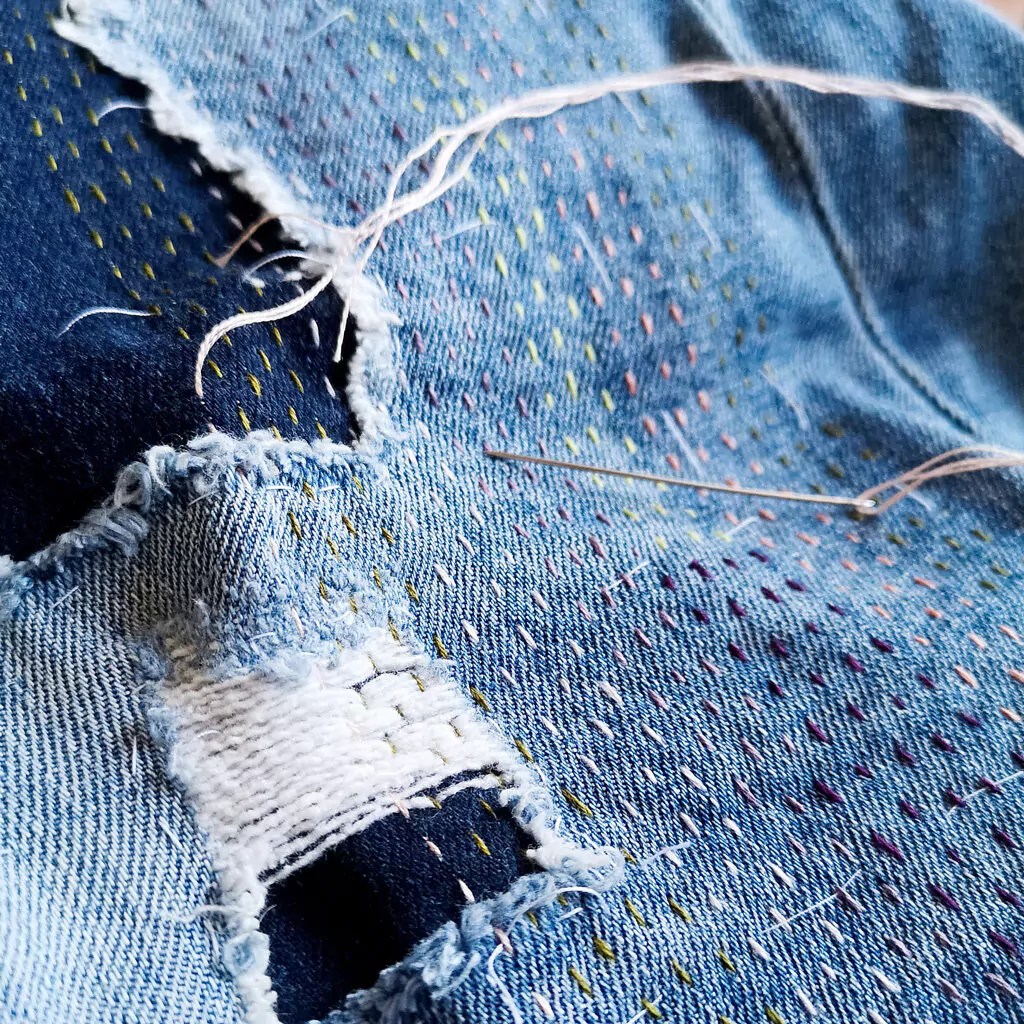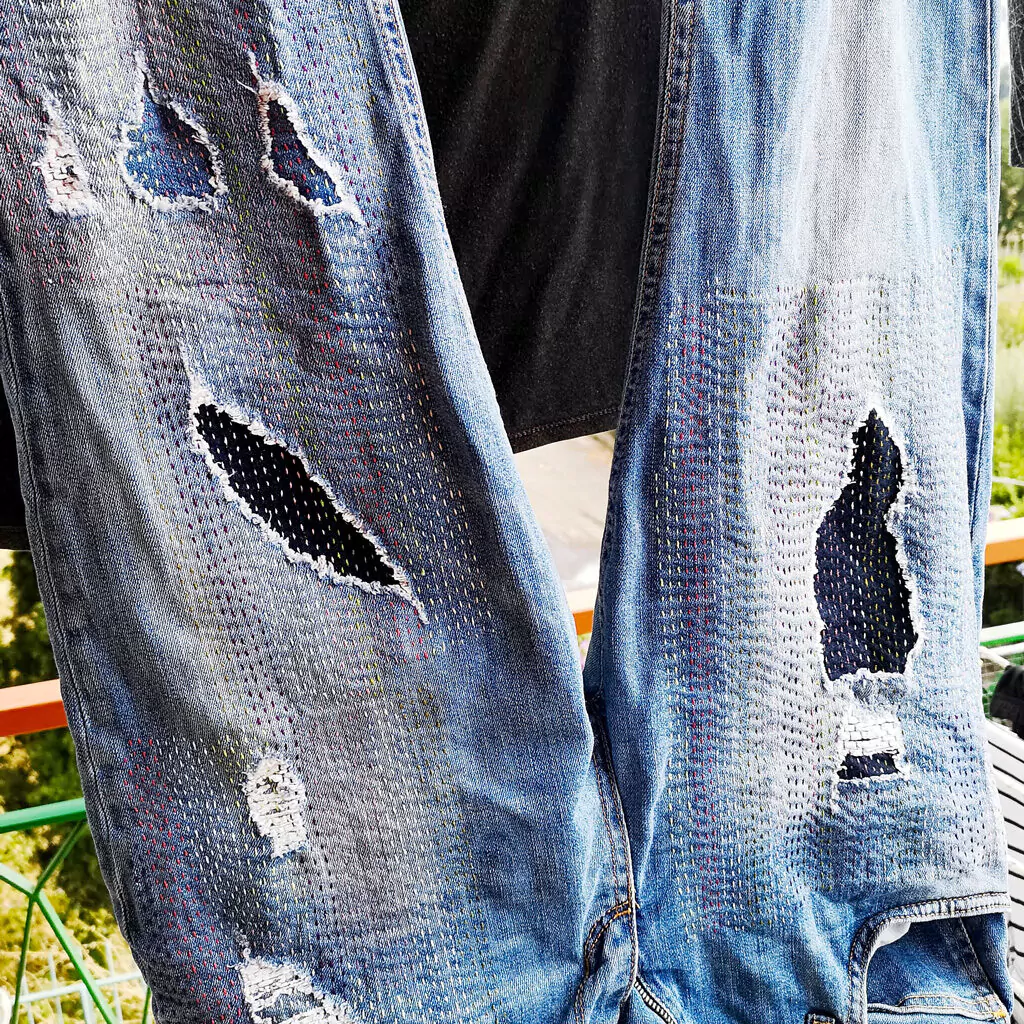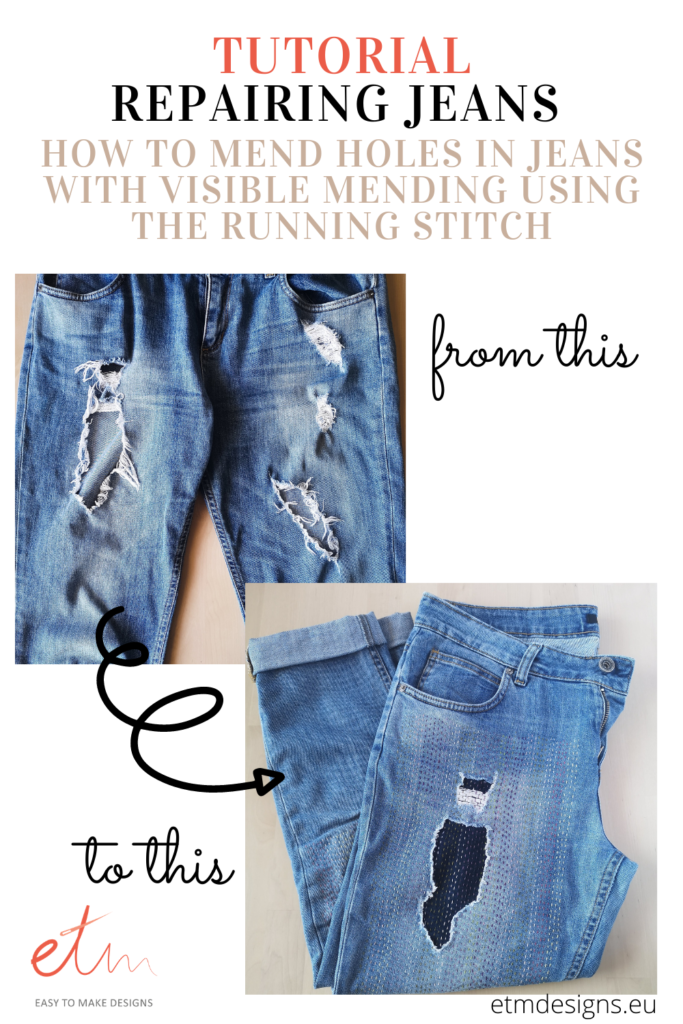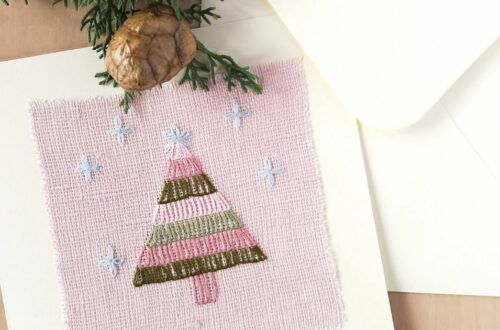
Repairing jeans. How to mend holes in jeans with Visible mending using the running stitch
Let’s be honest, it’s not so easy to find a pair of jeans that are comfortable, beautiful, and that you like to wear over and over again. But when you own them, they become your second skin.
Unfortunately, there are no eternal jeans. Tears, holes, and worn-out fabric are common problems of heavily worn clothes, and your favorite jeans are no exception.
Where are many ways to mend your jeans – from professional tailor to specialty denim repair service, from invisible mending to patches, from iron-on appliques to embellishments with sequins, and so on.
In this Tutorial, I want to share my favorite way of mending jeans – repairing jeans with visible mending using the running stitch.
Materials you will need:
- Jeans. Wash them before mending;
- Pieces of denim fabric for patches. I used scraps of different colors from old jeans. You can choose colors of patches depending on the effect you want to attain;
- Scissors;
- Some pins;
- Sewing thread for basting;
- Embroidery needle;
- Embroidery thread for the running stitch. You can use cotton floss or pearl cotton. Any kind of cotton thread of your chosen color will do.
Step 1. Prepare the patches
Cut out the pieces of the fabric that you will use as the patches. They should generously cover the hole you want to mend and some worn-out material around it. Make sure to cut out the shapes that will fit and keep in mind the pockets or embellishments.

Step 2. Pin the patches and baste them
The patches will be applied from under the hole. Turn the jeans inside out and pin the patches. Baste with large running stitches around the edge of the patch.
TIP: put a piece of cardboard inside the jeans’ leg when you pin and baste the patch. It will give you more fabric stability and save you from pinning an extra layer of fabric together.
Turn the jeans right side out. Now baste around the hole and tidy it up – cut out the projecting thread from the hole.
You will be stitching from the face of the jeans.
Step 3. Choose the color of your threads
The type and color of the thread you choose for this mending project will define your jeans’ final look.
I wanted mine to be colorful, so I chose to use many different cotton embroidery floss colors. I used 2 strands of the floss. If you want the stitches to be bold – you can use up to all 6 strands of the thread or choose pearl cotton thread.
Read more about embroidery threads here.


Step 4. Embroider
I chose to make vertical lines of running stitch in different colors. Still, you can make the lines horizontal or diagonal, if you wish.
If you want your lines to be perfectly aligned, use a marking tool and a ruler to draw some guiding lines for your stitches.
Read more about marking tools here.
And if you are not familiar with the running stitch, you will find a running stitch video lesson here.
Step 5. Wash it and wear it
Did you finish the embroidery? Now both layers of fabric – original jeans fabric and the patch are securely attached by the running stitch embroidery, and you can take out all the basting stitches.
Cotton threads for hand embroidery do not bleed the color and are washable in a washing machine, so don’t be afraid to wash your jeans as you did it before.
Be sure to turn them inside out before washing and do not tumble dry, but let them dry naturally.

I’m sure that you will love your mended pair of jeans even more than before. At least I do.
And remember, that you can use visible mending not only for repairing jeans, but also other pieces of clothing that need some fix.
If you need some inspiration on mending – check out my Pinterest board “Visible mending and darning clothes,” where I save all the mending projects that inspire me.



You May Also Like

How to transfer a pattern with the lightbox method
11 November 2020
Embroidered zipper pouch tutorial
14 June 2021








